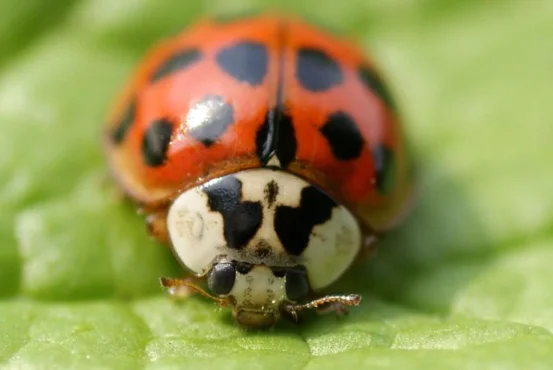Biological pest control is an eco-friendly alternative to chemical pesticides, using natural predators, parasites, and other organisms to manage pest populations. The biological method is not only sustainable but also effective in reducing pests without harming the environment.
Biological pest control offers a natural, effective, and sustainable way to manage pests. By utilizing predatory insects, parasitic organisms, microbial agents, and habitat manipulation, we can reduce reliance on chemical pesticides and promote a healthier environment.
Ready to make the switch to biological pest control? Start implementing these methods today for a greener, pest-free space! So, let’s explore these methods and how they work.
Biological Methods of Controlling Pests
1) Predatory Insects
One of the most effective ways to control pests naturally is by introducing predatory insects. These beneficial creatures help reduce pest populations by feeding on them, maintaining a balanced ecosystem without the need for chemical intervention. Predatory insects can be introduced in various settings, from home gardens to large-scale farms, ensuring a safer and healthier environment for plants, animals, and humans alike.
Common Predatory Insects
Predatory insects serve as natural pest controllers, helping to maintain balance in agricultural and garden ecosystems. These insects are effective at managing pest populations without the need for harmful chemical pesticides. By strategically introducing predatory insects into a pest-affected area, farmers and gardeners can harness nature’s own defense system to protect crops and plants.
- Ladybugs: Feed on aphids, whiteflies, and scale insects.
- Lacewings: Their larvae consume aphids, mealybugs, and mites.
- Praying Mantises: Eat a variety of insects, including caterpillars and beetles.
Using predatory insects in gardens and farms can significantly reduce pest populations while preserving beneficial species.
2) Parasitic Organisms
Parasitic organisms are another natural solution for managing pest populations effectively. These organisms target pests by using them as hosts, ultimately leading to their demise. This method provides a highly specific and sustainable way to keep harmful insect numbers in check without affecting other beneficial species in the ecosystem.
Examples of Parasitic Organisms
Parasitic organisms work by infecting or attaching themselves to pests, ultimately killing them. Unlike chemical pesticides, which can harm beneficial insects and other non-target species, parasitic organisms only affect the intended pest species. This makes them a highly targeted and environmentally friendly method of pest control.
- Parasitic Wasps: Target caterpillars, aphids, and beetle larvae by laying eggs inside them.
- Nematodes: Microscopic worms that infect and kill soil-dwelling pests like grubs and root weevils.
By introducing these natural parasites, farmers and gardeners can keep pest populations under control in a targeted manner.
3) Microbial Control
Microbial control is a highly effective biological method that uses bacteria, fungi, and viruses to target and eliminate pests. Unlike chemical pesticides, these microbes only affect specific pests, making them a safer and more environmentally friendly solution. This approach is widely used in agriculture and organic farming to protect crops while maintaining ecological balance.
Effective Microbial Agents
Microbial agents provide a unique method of pest control by using naturally occurring microorganisms to infect and kill harmful pests. These agents are commonly applied as sprays or soil treatments and are particularly effective in organic farming. Because microbial agents are host-specific, they do not harm beneficial insects, making them an excellent choice for integrated pest management.
- Bacillus thuringiensis (Bt): A bacterium that produces toxins harmful to caterpillars, mosquitoes, and beetle larvae.
- Beauveria bassiana: A fungus that infects and kills pests like aphids, whiteflies, and thrips.
- Nuclear Polyhedrosis Virus (NPV): Targets specific caterpillars, reducing their population naturally.
Microbial pesticides offer a natural and safe way to control pests while maintaining soil and plant health.
4) Habitat Manipulation
Creating an environment that discourages pests while encouraging beneficial organisms is a strategic approach to biological pest control. By altering habitats to support natural predators and reduce pest-friendly conditions, farmers and gardeners can create a long-term, sustainable solution for pest management.
Methods of Habitat Manipulation
Habitat manipulation involves modifying the environment to attract beneficial insects and deter pests. By cultivating plant diversity, removing pest-friendly conditions, and creating protective shelters for natural predators, farmers and gardeners can achieve long-term pest control without the use of chemicals. This approach not only reduces pest populations but also strengthens the overall resilience of the ecosystem.
- Planting Companion Crops: Attract beneficial insects and repel pests.
- Providing Shelter: Installing hedgerows, cover crops, and mulch to encourage predatory insects.
- Removing Pest-Friendly Conditions: Eliminating standing water, overgrown vegetation, and debris where pests thrive.
By modifying habitats, farmers and gardeners can create conditions that naturally regulate pest populations.
Integrated Pest Management (IPM)
Integrated Pest Management (IPM) is a comprehensive approach that combines multiple biological control methods with cultural and mechanical techniques to achieve long-term pest suppression. IPM focuses on minimizing environmental impact while effectively managing pest populations.
Components of IPM:
- Monitoring and Identification: Regularly checking for pest presence and identifying the best control measures.
- Biological Control: Using predators, parasites, and microbial agents to manage pests.
- Physical and Mechanical Control: Employing traps, barriers, and manual removal of pests.
- Chemical Control as a Last Resort: If necessary, use environmentally friendly pesticides in limited quantities.
Comparing Biological Pest Control with Other Methods
Understanding the differences between biological pest control and other methods helps in making informed decisions about pest management strategies. Biological methods focus on sustainability, whereas chemical and mechanical methods have varying effects on the environment and long-term agricultural health.
Biological vs. Chemical Pest Control
- Environmental Impact: Chemical pesticides can contaminate soil and water, whereas biological methods are eco-friendly and sustainable.
- Effectiveness: Chemical solutions often provide immediate results, but pests may develop resistance over time. Biological methods take longer but offer long-term benefits.
- Health and Safety: Biological control is safer for humans, pets, and beneficial insects, while chemical pesticides pose potential health risks.
Biological vs. Mechanical Pest Control
- Cost: Mechanical methods such as traps and barriers require maintenance, whereas biological methods are often self-sustaining.
- Implementation: Mechanical control involves physical removal of pests, which can be labor-intensive, while biological control allows nature to regulate pest populations.
Finding the Right Balance
While each method has its advantages, integrating biological pest control with other approaches—such as mechanical and cultural controls—can create a comprehensive pest management strategy. Combining techniques ensures effective, sustainable, and environmentally friendly pest control.
How to Implement Biological Pest Control Effectively
Implementing biological pest control successfully requires strategic planning and an understanding of local ecosystems. Farmers and gardeners should consider the following steps to maximize effectiveness:
Assessing the Pest Problem
Before choosing a biological control method, it’s essential to identify the pest species and understand their behavior. Conducting thorough inspections can help determine the most appropriate natural enemies to introduce.
Choosing the Right Biological Control Agents
Selecting effective natural predators, parasites, or microbial agents is crucial. Farmers should consider the target pest, climate conditions, and the compatibility of the biological control agents with existing crops.
Monitoring and Maintaining the Balance
Regular monitoring of pest populations and biological control agents ensures ongoing effectiveness. Adjustments may be needed over time to maintain a balance between pests and their natural enemies.
Combining Methods for Maximum Effectiveness
Integrating biological control with cultural and mechanical practices enhances overall pest management. Strategies such as crop rotation, habitat manipulation, and trap cropping can support the success of biological pest control.
Benefits of Biological Pest Control
Biological pest control offers numerous advantages over chemical methods. By utilizing natural processes, it provides a sustainable and environmentally friendly solution for managing pest populations.
- Environmentally Friendly: Reduces chemical pesticide use, protecting soil and water.
- Sustainable: Offers long-term pest management solutions.
- Cost-Effective: Requires fewer applications compared to chemical treatments.
- Targets Specific Pests: Minimizes harm to beneficial insects and plants.
- Reduces Pesticide Resistance: Overuse of chemical pesticides can lead to pest resistance, making them ineffective over time. Biological control methods prevent this issue by using diverse natural enemies.
- Enhances Soil and Plant Health: By avoiding chemical residues, biological control promotes soil fertility and plant resilience, contributing to healthier crops.
- Preserves Biodiversity: By targeting specific pests without affecting beneficial insects, biological control helps maintain a balanced ecosystem.
Nature’s Balance: How Biological Control Sustains Ecosystems
Nature has its own way of maintaining balance, and biological pest control plays a crucial role in sustaining ecosystems. By leveraging natural predators and organic methods, we can protect crops and gardens while preserving biodiversity. Unlike chemical solutions that disrupt environmental harmony, biological pest control enhances the resilience of natural habitats, ensuring long-term agricultural success and ecological stability.
The Role of Predators in Ecosystem Stability
Predatory insects and animals help regulate pest populations, preventing outbreaks that can damage crops and plants. These natural enemies maintain the delicate balance of ecosystems and contribute to biodiversity.
How Biodiversity Supports Pest Control
A diverse environment fosters healthy interactions between plants, animals, and microorganisms, reducing the chances of pest infestations. Biodiversity increases the number of natural predators, reducing the need for chemical interventions.
The Long-Term Benefits of Sustainable Pest Management
Biological control methods provide sustainable pest management solutions that do not degrade soil quality or harm beneficial organisms. Over time, these methods enhance the resilience of agricultural and natural ecosystems.
FAQs
1. How effective is biological pest control?
Biological pest control is highly effective when implemented correctly. It may take longer to see results compared to chemical pesticides, but it provides a sustainable and long-term solution to pest problems.
2. Can biological pest control be used in home gardens?
Yes, biological pest control is excellent for home gardens. Introducing beneficial insects, using microbial treatments, and practicing habitat manipulation can help maintain a healthy garden ecosystem.
3. Is biological pest control safe for pets and humans?
Yes, biological pest control is safe for pets, humans, and the environment. Unlike chemical pesticides, biological methods target specific pests without harming other organisms.

Shannon Reyes is a seasoned writer with a knack for crafting engaging blogs on a variety of service industries, including plumbing, cleansing, moving, pest control, and roofing. With a keen eye for detail and a passion for helping readers navigate complex topics, Shannon brings her expertise to life through informative and accessible content.










